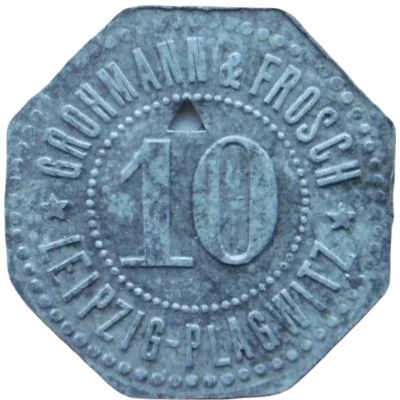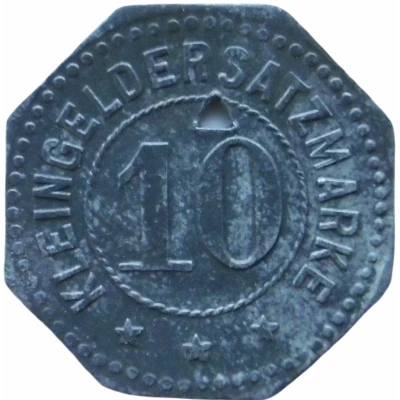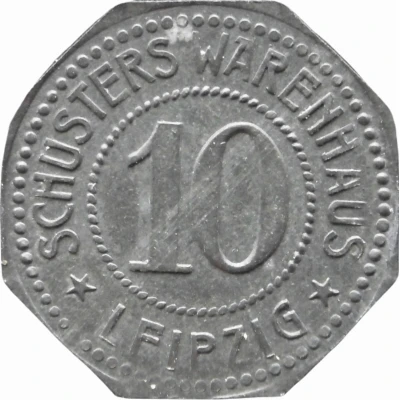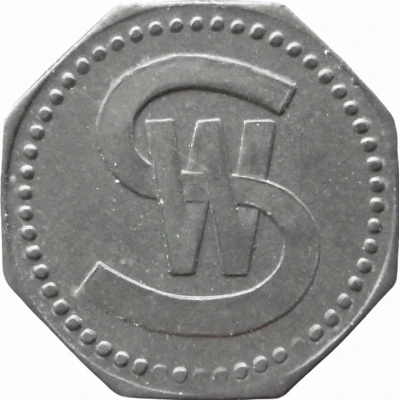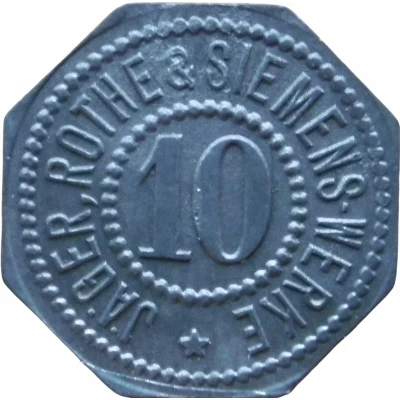
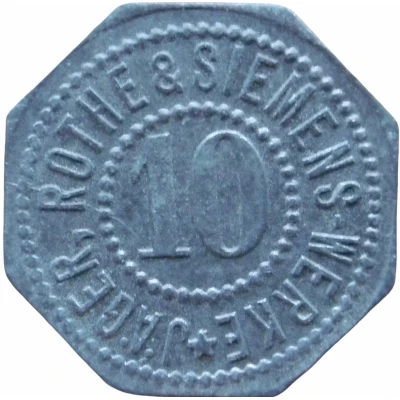

© Willem63 (CC BY-NC-SA)
10 Pfennigs - Leipzig (Jäger, Rothe and Siemens-Werke) ND
| Zinc | 1.7 g | 20.8 mm |
| Issuer | City of Leipzig (Federal state of Saxony) |
|---|---|
| Type | Standard circulation coin |
| Value | 10 Pfennigs (10 Pfennige) (0.10) |
| Currency | Mark (1914-1924) |
| Composition | Zinc |
| Weight | 1.7 g |
| Diameter | 20.8 mm |
| Thickness | 1.0 mm |
| Shape | Octagonal (8-sided) |
| Technique | Milled |
| Orientation | Medal alignment ↑↑ |
| Demonetized | Yes |
| Updated | 2024-10-04 |
| Numista | N#278760 |
|---|---|
| Rarity index | 95% |
Reverse
Pearl rim, legend surrounding beaded circle with denomination centered
Script: Latin
Lettering:
JÄGER, ROTHE & SIEMENS-WERKE
10
★
Edge
Plain
Comment
Menzel: BBBFa: Apparatebau
Interesting fact
The obverse of the coin features the portrait of a young woman, representing the city of Leipzig, surrounded by the inscription "STADT LEIPZIG" (City of Leipzig) and the year of minting. The reverse of the coin depicts the city's coat of arms, which includes a shield with a lion and a griffin, symbolizing the city's history and strength. This coin is interesting because it was minted during a time of significant change in Germany. The 10 Pfennigs coin was introduced in 1948, just a few years after the end of World War II, and it was used as a standard circulation coin in the Federal Republic of Germany. The fact that it features the city of Leipzig's coat of arms and a young woman representing the city is a nod to the city's rich history and culture. It's also worth noting that the coin was made of zinc, which was a common material used for coin production during this time period. The use of zinc helped to reduce the cost of production and made the coin more durable than coins made of other materials. Overall, this coin is a fascinating piece of history that highlights the resilience and strength of the city of Leipzig and the Federal Republic of Germany during a time of great change and rebuilding.
